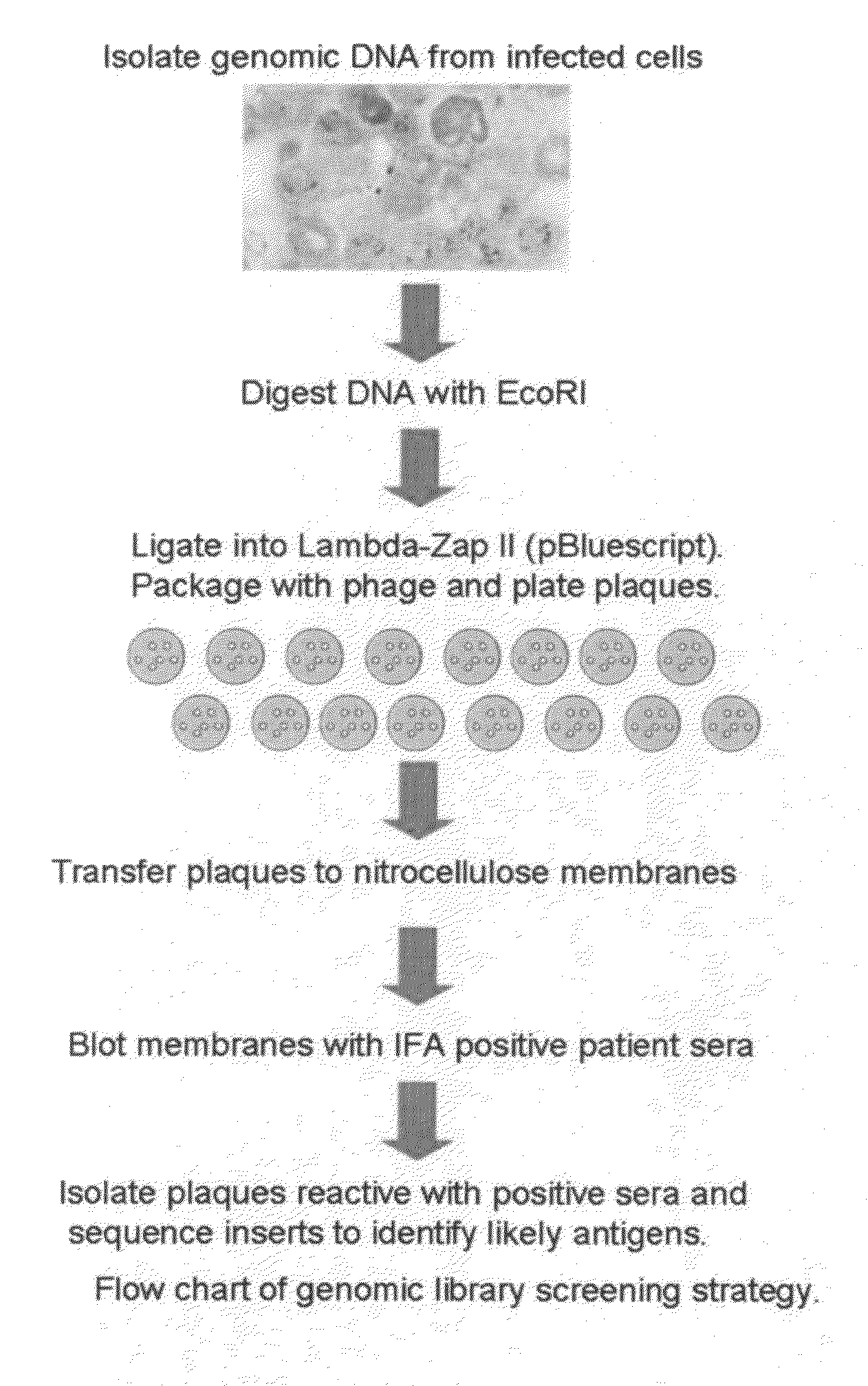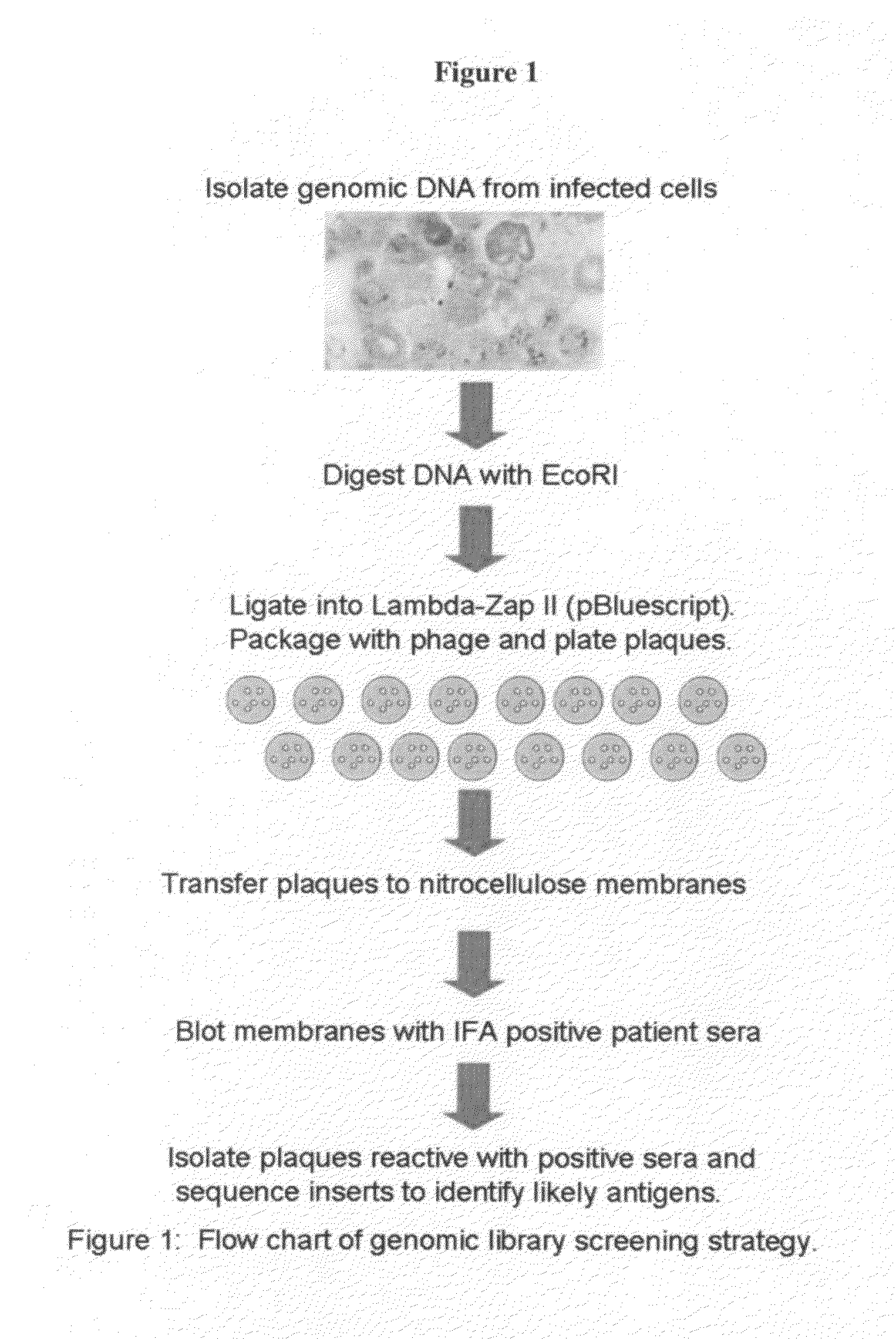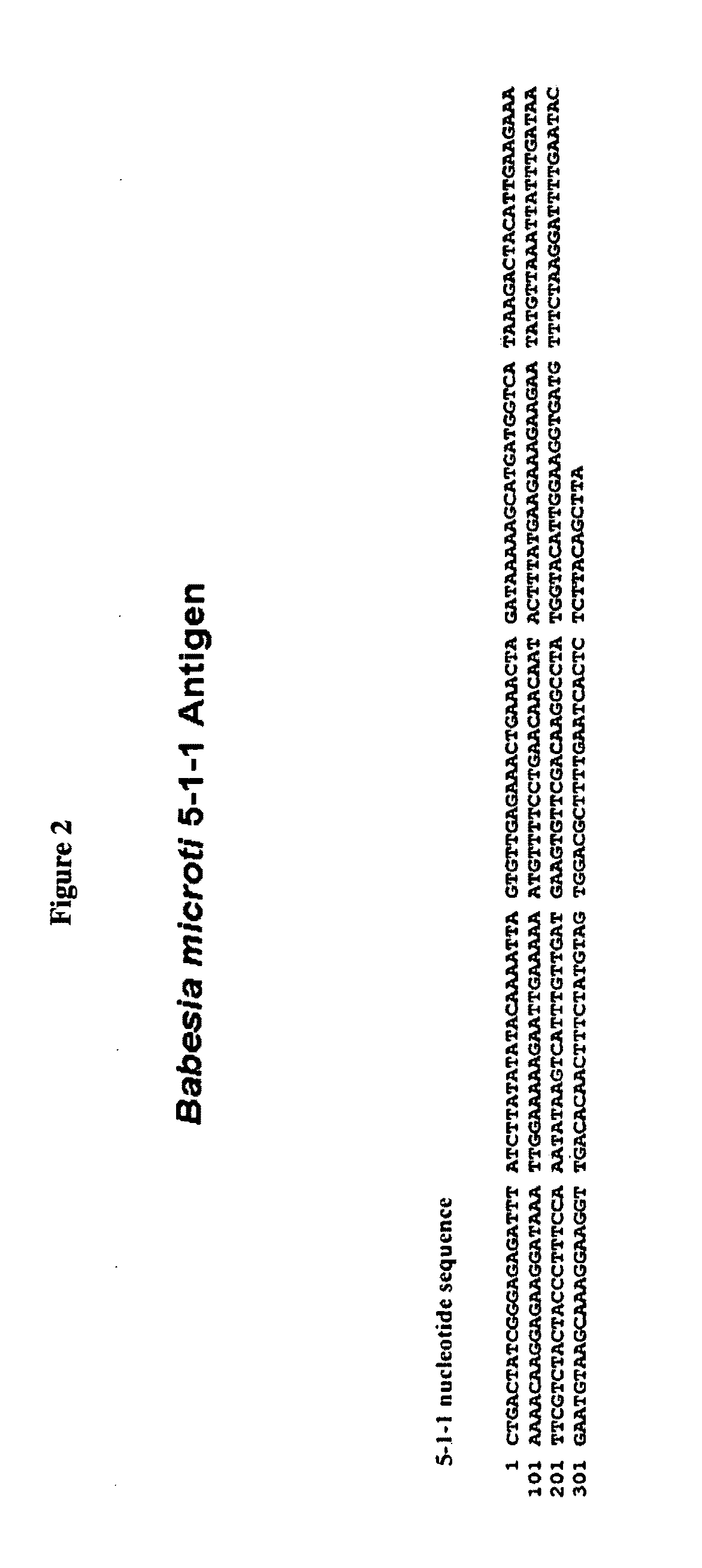Babesia microti genomic clones containing novel antigens useful in the diagnosis of babesiosis
a technology of babesia microti and genomic clones, which is applied in the field of genomic clones containing novel genes encoding antigens in babesia microti, can solve the problems of easy mismatch in smears, the most severe immunocompromised, and the method of often yielding false negatives, so as to achieve accurate and quantitative determination of seropositivity
- Summary
- Abstract
- Description
- Claims
- Application Information
AI Technical Summary
Benefits of technology
Problems solved by technology
Method used
Image
Examples
example 1
Identification of Babesia Antigens Cross-Reactive with Babesia-Positive Human Sera
[0090]I. Construction of Genomic Library
[0091]Genomic DNA was isolated from infected hamster blood using Qiamp DNA blood kit (Qiagen, Valencia, Calif.). The isolated genomic DNA was digested with EcoR1 and precipitated. (FIG. 1). 150 ng of digested genomic DNA was ligated into the pBluescript SK(−) vector (Stratagene, La Jolla, Calif.). The ligation reaction was packaged with phage Gigapack III (Stratagene, La Jolla, Calif.), and then titered to determine the ideal screening density.
[0092]II. Screening of Genomic Library
[0093]The Babesia library was plated onto 20 NZY agar plates in E. coli strain XL-1 Blue MRF—, and plaques were allowed to form for 8 hours. Nitrocellulose membranes were soaked for 15 minutes in 100 mM IPTG and plaques were transferred to the membranes by incubation at 37° C. for 3 hours. The membranes were washed in PBS-Tween 20 and blocked overnight in 1% BSA (Bovine Serum Albumin) i...
example 2
Two Novel Genomic Clones
[0096]Sequencing of these clones revealed multiple inserts containing open reading frames (ORFs) with homology to known B. microti genes, as well as ORFs with homology to other Apicomplexan parasites such as Theilleria and Plasmodium species. Three ORFs were chosen for further analysis by protein expression, two from insert O-1-1, and one from insert 5-1-1.
[0097]Based on preliminary experiments with the two ORFs from clone O-1-1, one was chosen for further study based on its reactivity to TA-positive and IFA-negative patient sera (data not shown). O-1-1 76 is a 76 amino acid (aa) sequence encoding an 8.2 kDa protein (FIG. 7). 5-1-1 is a 124 aa, 14.8 kDa partial protein (FIG. 3). The library insert for clone 5-1-1 did not appear to contain the full-length protein as there was no discernable stop codon in the insert.
example 3
Protein Production
[0098]Primers were designed to clone O-1-1 76 and 5-1-1 into the pET30 Ek / LIC (enterokinase ligation-independent cloning) expression vector (Novagen, San Diego, Calif.). A stop codon was engineered into the reverse primer for 5-1-1 to stop protein translation at the end of the insert sequence. For cloning of 5-1-1, forward primer 5′-gacgacgacaagagcctgactatcggg-3′ (SEQ ID NO: 5) and reverse primer 5′-gaggagaagcccggctataagctgtaag-3′ (SEQ ID NO: 6) were used to amplify the clone before ligation into pET30Ek / LIC expression vector. For the 0-1-1 76 cloning, forward primer 5′-gacgacgacaagagggatggcgattataac-3′ (SEQ ID NO: 7) and reverse primer 5′-gaggagaagcccgggggtactatat-3′ (SEQ ID NO: 8) were used prior to ligation into pET vector.
[0099]Protein expression in transformed BL21 E. coli was induced using the Overnight Express Autoinduction System (Novagen, San Diego, Calif.). Expressed protein was purified over a nickel column (Ni-NTA column) (Novagen, San Diego, Calif.) us...
PUM
| Property | Measurement | Unit |
|---|---|---|
| Time | aaaaa | aaaaa |
| Temperature | aaaaa | aaaaa |
| Composition | aaaaa | aaaaa |
Abstract
Description
Claims
Application Information
 Login to View More
Login to View More - R&D
- Intellectual Property
- Life Sciences
- Materials
- Tech Scout
- Unparalleled Data Quality
- Higher Quality Content
- 60% Fewer Hallucinations
Browse by: Latest US Patents, China's latest patents, Technical Efficacy Thesaurus, Application Domain, Technology Topic, Popular Technical Reports.
© 2025 PatSnap. All rights reserved.Legal|Privacy policy|Modern Slavery Act Transparency Statement|Sitemap|About US| Contact US: help@patsnap.com



